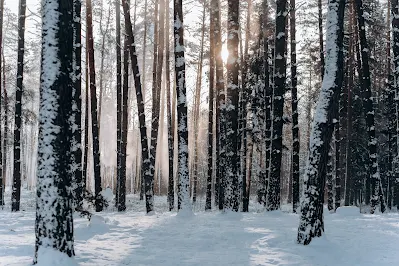Oymyakon, Russia: Exploring the Extreme Cold of the Coldest Inhabited Place on Earth
Introduction
Nestled in the vast and remote expanse of Siberia, Oymyakon stands as a testament to human resilience in the face of extreme cold. Known as the coldest inhabited place on Earth, this Russian town offers a unique glimpse into the challenges and the intriguing way of life in subarctic conditions. In this article, we'll explore the frosty landscapes, the people who call Oymyakon home, and the captivating stories that unfold in this extreme environment.
I. The Cold Facts
A. Record-Breaking Temperatures
Oymyakon holds the record for the lowest officially recorded temperature in the Northern Hemisphere, reaching a bone-chilling -128.6°F (-89.2°C) in 1933. The region experiences an average temperature of -58°F (-50°C) during the winter months.
B. Permafrost and Frozen Ground
The ground in Oymyakon is permanently frozen, creating a landscape of permafrost. This frozen ground poses unique challenges for construction and agriculture, shaping the infrastructure of the town and the way its residents live.
II. Challenging Living Conditions
A. Winter Darkness
Oymyakon experiences polar nights during the winter months, where the sun remains below the horizon for an extended period. Residents adapt to a landscape enveloped in darkness, relying on artificial lighting and their knowledge of the terrain.
B. Frozen Essentials
The extreme cold poses challenges to daily life, including frozen pipes and difficulties in obtaining essential supplies. Locals employ ingenious methods to keep water flowing and ensure survival in the harsh conditions.
III. The Resilient People of Oymyakon
A. Indigenous Communities
Oymyakon is home to indigenous communities, including the Yakuts, who have adapted their lifestyles to thrive in the subarctic climate. Traditional practices and cultural heritage play a crucial role in the resilience of these communities.
B. Unique Occupations
The harsh environment has given rise to unique occupations, such as reindeer herding and ice fishing, which have sustained the local economy for generations. These traditional activities continue to be vital for the livelihoods of Oymyakon's residents.
IV. Winter Tourism
A. Attracting Adventurous Travelers
Despite its extreme climate, Oymyakon has become a destination for adventurous travelers seeking the thrill of experiencing the coldest inhabited place on Earth. Winter tourism offers a glimpse into the unique lifestyle and landscapes of the region.
B. Frosty Attractions
Tourists can explore frost-covered landscapes, witness the mesmerizing Northern Lights, and engage in activities like dog sledding. Oymyakon's extreme conditions provide a distinctive backdrop for those seeking unconventional travel experiences.
V. Ongoing Challenges and Adaptations
A. Climate Change Impact
The impact of climate change poses additional challenges to Oymyakon's residents. Warmer temperatures and changes in weather patterns affect traditional ways of life, emphasizing the need for adaptation and resilience.
B. Sustainable Practices
Efforts are underway to promote sustainable practices and environmental conservation in Oymyakon. These initiatives aim to balance the preservation of the unique ecosystem with the evolving needs of the community.
VI. Conclusion
Oymyakon, with its record-breaking temperatures and unique way of life, stands as a symbol of human endurance in the face of extreme conditions. As we explore the frozen landscapes, meet the resilient people who call Oymyakon home, and understand the challenges they navigate, this remote town offers not only a lesson in survival but a fascinating insight into a world where winter's icy grip shapes every aspect of life.


Wow!
ReplyDelete